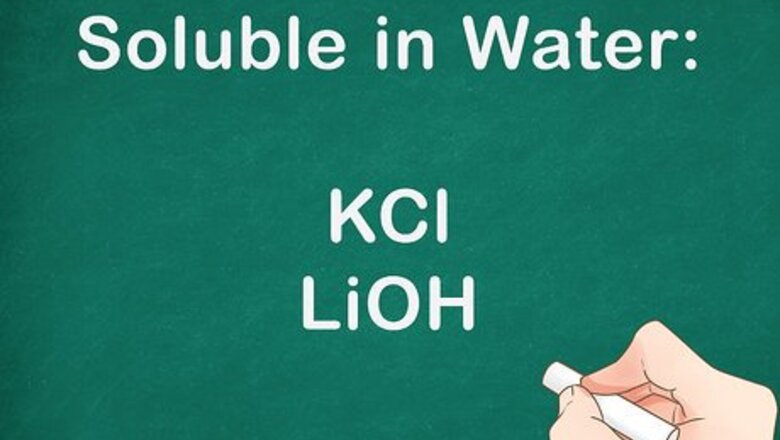
views
Learning the Solubility Rules
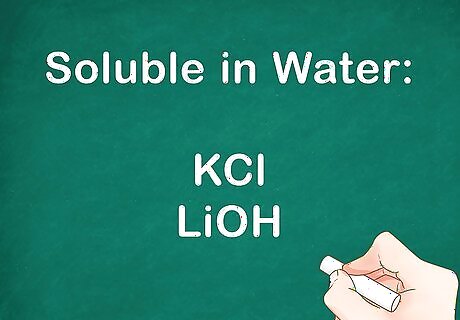
Recognize that salts containing Group 1A elements are soluble. The periodic table is organized into rows and columns called periods and groups, respectively. The first column of the table contains the Group 1A elements. They are the alkali metals and include Li, Na, K, Cs, and Rb. For example: KCl and LiOH are soluble in water.
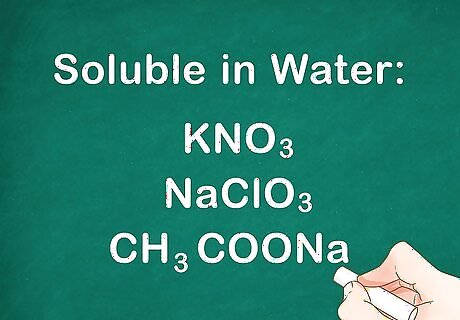
Know that salts containing nitrates, chlorates, and acetates are soluble. When a nitrate, NO3, chlorate, ClO3, or acetate, CH3COO, form a salt, they are soluble in water. For example: KNO3, NaClO3, and CH3COONa are all soluble.
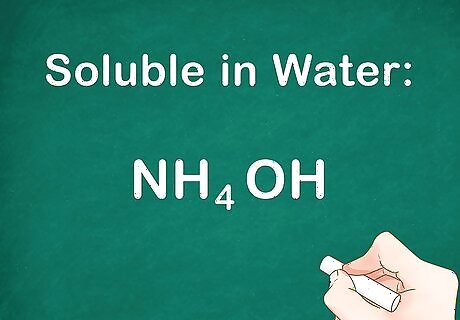
Understand that all ammonium salts are soluble. The ammonium ion, NH4, makes salt compounds that completely dissociate in the presence of water. There are no exceptions to this rule. For example: NH4OH is soluble even though it contains a hydroxide.
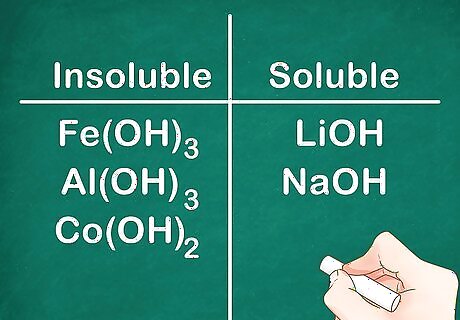
Know that most hydroxide compounds are insoluble. Some hydroxide salts are slightly soluble: hydroxides formed with Group 2 elements (Ca, Sr, and Ba). The exception to this rule is that hydroxide salts formed with Group 1 elements are soluble because Group 1A elements are always soluble. For example: Fe(OH)3, Al(OH)3, and Co(OH)2 are insoluble, but LiOH and NaOH are soluble.
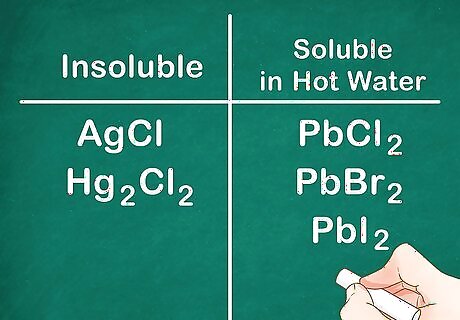
Recognize that salts containing Group 17 nonmetals are generally soluble. Group 17 nonmetals include chlorine (Cl), bromine (Br), and iodine (I). Exceptions to this rule include silver, lead, and mercury. Compounds consisting of these nonmetals and ions, called halide salts, are not soluble. For example: AgCl and Hg2Cl2 are both insoluble. Note that PbCl2, PbBr2, and PbI2 are soluble in HOT water.
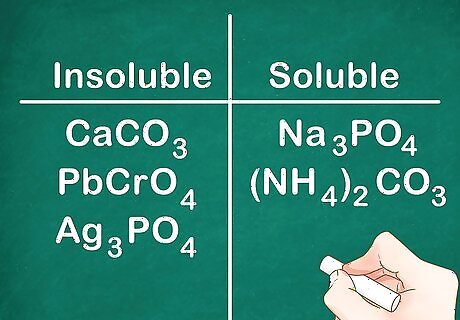
Know that most carbonates, chromates, and phosphates are insoluble. The chemical formulas for each of these are as follows: CO3 (carbonates), CrO4 (chromates), and PO4 (phosphates). Exceptions to this rule include the Group 1A metals and NH4 compounds which are soluble. For example: Compounds like CaCO3, PbCrO4, and Ag3PO4 are all insoluble while compounds like Na3PO4 and (NH4)2CO3 are soluble.
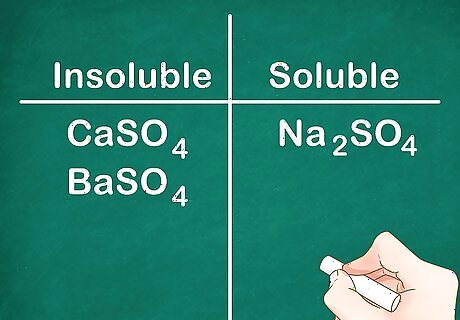
Understand that most sulfate salts are soluble. Most of the salt compounds containing SO4 are soluble in water. Exceptions to this rule include the following ions Ca, Ba, Pb, Ag, Sr, and Hg. Sulfate salts containing these ions are insoluble. For example: Na2SO4 is completely soluble, but CaSO4 and BaSO4 are not soluble.
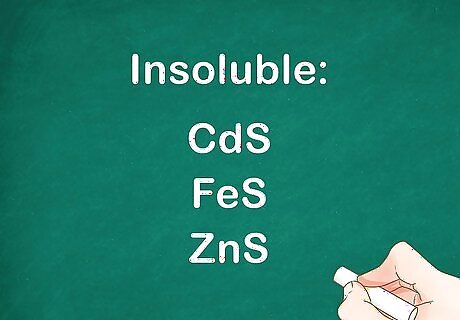
Recognize that most sulfides are insoluble in water. As with many of the other rules, there are exceptions including barium, calcium, magnesium, sodium, potassium, and ammonium. Only sulfide compounds made with these elements are soluble in water. For example: CdS, FeS, and ZnS are all insoluble. On the other hand, sulfides of transition metals are highly insoluble.
Using the NAG SAG Mnemonic
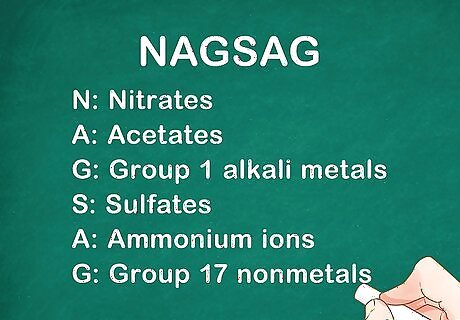
Use the mnemonic NAG SAG. NAG SAG is an easy way to remember the soluble compounds and the exceptions to solubility. Write out NAG SAG as an acrostic and memorize what each letter stands for. Although this mnemonic doesn’t include all of the solubility rules, it does cover a lot of them. All of the letters represent soluble molecules. N: Nitrates (NO3) A: Acetates (CH3COO) G: Group 1 alkali metals (Li, Na, etc) S: Sulfates (SO4) A: Ammonium ions (NH4) G: Group 17 nonmetals (F, Cl, Br, I, etc.)
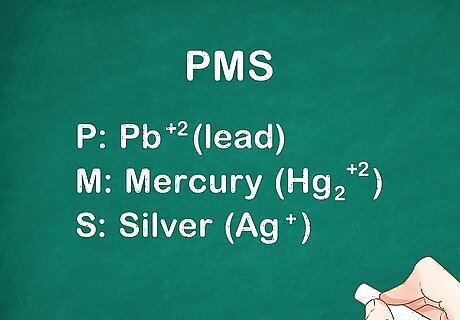
Write PMS to represent the first exception. P stands for Pb (lead). M stands for Mercury (Hg2). S stands for Silver (Ag). These 3 ions are never soluble with the sulfate group or group 17 nonmetals. When writing out the mnemonic, put a star next to PMS and a similar star next to the S and G of SAG to remember these are exceptions.
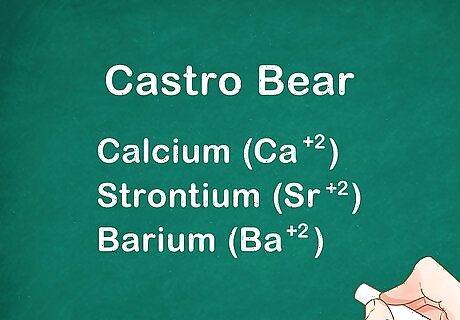
Remember Castro Bear to represent the second exception. Castro Bear may sound silly, but it stands for the 3 ions Calcium (Ca), Strontium (Sr), and Barium (Ba). These 3 ions are never soluble with sulfates. When writing the mnemonic, put a cross next to Castro Bear and another cross next to the S in SAG to remember that these ions are exceptions to the sulfate solubility.
Memorizing the Basics

Review the material frequently. Memorizing anything takes time and effort. The more frequently you see the material, the more likely you are to remember it later. Read through the rules often and quiz yourself on them daily. Ask friends and family to quiz you on the solubility rules at lunch or over dinner. Keep a copy of the rules handy to review if you have some downtime.

Make and use flashcards. Flashcards are a great way to review a lot of material quickly and memorize it. Make flashcards with the solubility rules on them and some example compounds. Go through the cards until you know the rules and which compounds are soluble or not. Carry your flashcards with you and take them out if you’re sitting in the car or waiting around for friends. Any amount of downtime is good for reviewing flashcards.
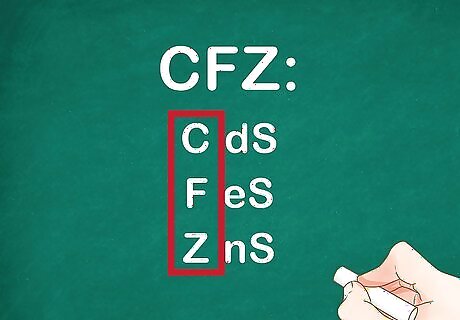
Use mnemonics. Mnemonics are special memory tricks that can help you memorize information quickly and easily. When learning a mnemonic, it is helpful to write it out multiple times until you can remember it. The mnemonic is only useful if you know what everything stands for! Frequently practice writing out the mnemonic and what each letter stands for so you don’t forget. When you get a test or quiz, write out the mnemonic first, so you can reference it the rest of the time.




















Comments
0 comment